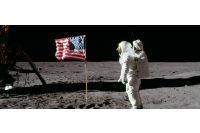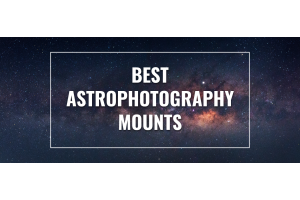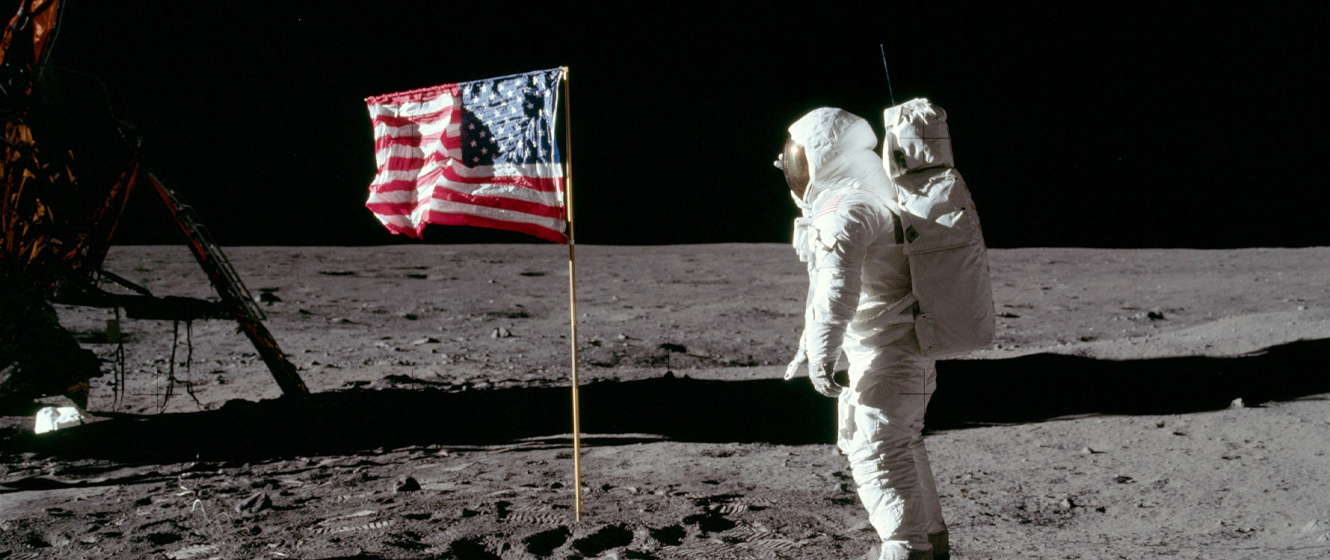
From July 20, 1969, to December 1972, NASA sent the Apollo missions to the Moon. These missions marked the conclusion of the space race, and the beginning of a new era: one where human beings had willingly left our world and traversed to another. 12 humans walked on the Moon: four of which, at the time of writing this article, are still alive. But did you know that you can see these landing sites for yourself? While it’s impossible to actually see the actual hardware on the Moon, such as the US flag or the descent module, you can see many of the mountain ranges, canyons, and craters all seen by the Apollo astronauts. In this article, we’ll mainly be focused on the Apollo 11, 15, and 17 landing sites - however, this process can be repeated for all the other missions.
What Will I Need?
If you simply want a rough idea of where to look for the Apollo landing sites (without actually having to go through the hassle of identifying all the detail), then all you’ll need is a small telescope or a pair of binoculars. A good telescope might include the Celestron StarSense Explorer LT 80AZ for this purpose. However, if you want to observe up-close detail of these landing sites, you’ll want a much larger telescope - at least 8” in diameter, if not more. The reason for that is even though the craters & mountain ranges visited by the Apollo astronauts might appear huge in the photos, in reality, their angular size in comparison to the rest of the Moon is quite small. To start off, we recommend a Celestron NexStar 8SE or an Apertura 10” Dobsonian.
Am I Ready to Find These Landing Sites?
If you’re a beginner, we recommend exploring some of the larger craters on the Moon first before attempting to find the Apollo landing sites. These would include craters such as Tycho and Copernicus, two of the larger impact craters on the Moon. Once you’ve found these two, make sure you have a good understanding of the lunar geography and learn how to identify the major mare on the Moon (more about that later on).

Hadley Delta as seen by the Apollo 15 astronauts during their first spacewalk: July 31, 1971. Image Credit: NASA
Can We See the Actual Hardware on the Moon?
Short answer: No. Longer answer: Unfortunately, it's physically impossible with any ground base telescope to see Apollo artifacts on the surface of the Moon. First of all, we have an atmosphere between us and the Moon. The atmosphere distorts the image, reducing the resolution that we can see. Secondly, we’re limited by the resolution capability of our telescopes, or the ability of our telescope to resolve the angular diameter of an object. Let’s take the Apollo flag as an example. Per NASA, the flag was about 3 ft by 5 ft. For simplicity, let’s just say the flag is 5 ft across. The average distance to the Moon is 238,900 miles. Converting this to feet and plugging this into a relatively simple trigonometric equation, we find that the angular diameter is equal to roughly 1*10^-8 radians, or ~0.002 arcseconds. Your average 8” Dobsonian would be lucky to resolve even 1 arcsecond on a good night.
When Is the Best Time to see the Apollo Landing Sites?
Your best bet is when the surface detail is in highest contrast. This is usually a day or two after the lunar terminator, or the point where the light of the Moon meets darkness, passes by the landing sites. At this point, the shadows of the mountains and craters near each of the landing sites cast the longest shadows, making them easier to spot.
Getting Familiar with the Lunar Map
To identify the Apollo landing sites, we need to take a closer look at the surface of the Moon. When looking at the moon, many remark that they can see a “face”. This face is made up of the lunar mare, dark areas in the lunar regolith rich with basalt. The major ones are Mare Crisium, Mare Fecundiatis, Mare Tranquilitatis, Mare Serenitatis, Mare Imbrium, Mare Nubium, Mare Humorum, and Oceanus Procellarum. All of the Apollo missions landed either on or near these lunar mares.

Image Credit: NASA/GSFC/Arizona State University
How to Find Apollo 11 - Tranquility Base
The most historic Apollo landing site, Tranquility base, is one of the most difficult to find. Apollo 11’s descent module, Eagle, landed in one of the most plain and uninteresting locations on the surface of the Moon. And for good reason - to avoid mountains & large craters for the very first moon landing. If you’ve ever done starhopping before, this process might seem familiar to you. To find Tranquility Base, we need to look for the Mare Tranquillitatis basin on the Moon. You can easily spot the Sea of Tranquility with the naked eye, sandwiched in between Mare Serenitatis and Mare Fecunditatis.
For the next part, we definitely recommend using a telescope with a decent aperture and a nice long focal length and magnification. Look to the southwestern portion of the Sea of Tranquility. There you should see an array of craters: specifically, Ritter and Sabine craters. The Apollo 11 landing site is just to the south and east of Sabine crater. If you have enough aperture and wish to narrow down your search even more, look for a line of three craters arranged perpendicular to and to the southeast of Sabine crater. These three craters (from west to east) are named Aldrin, Collins, and Armstrong crater. Tranquility base is immediately to the south of Collins crater and north of Moltke crater. Unfortunately, there’s not much more to see here. As mentioned, Tranquility Base is located at one of the most uninteresting portions of the Moon, and you will find little more gratification here other than simply seeing the rough area where Apollo 11 landed on the Moon.
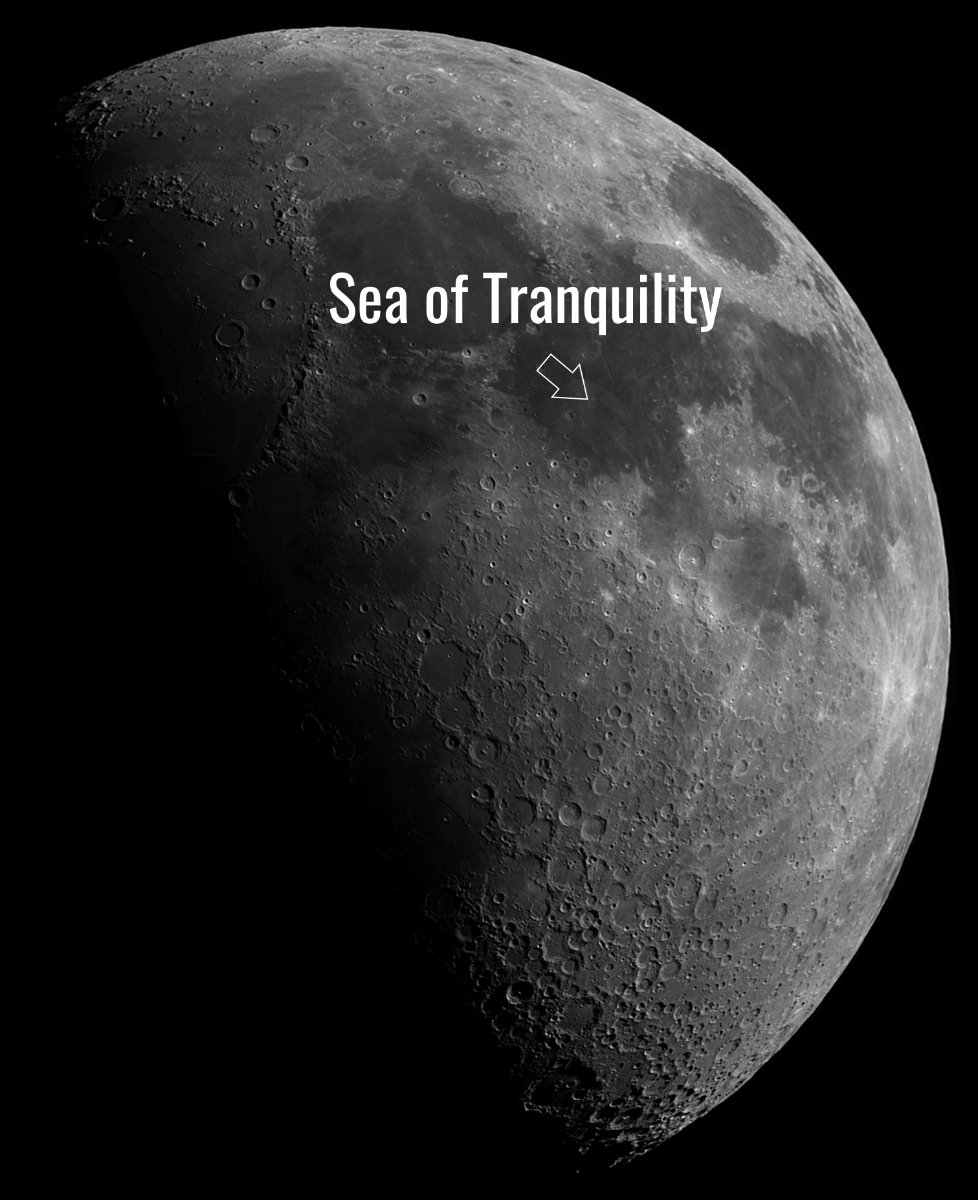

How to Find Apollo 15 - Hadley Rille
The Apollo 15 landing site is by far one of the most interesting that you can find on the surface of the Moon. Hadley Rille is located in the Montes Apenninus mountain range. To find Hadley Rille, look for the crater Archimedes in Mare Imbrium “the Sea of Shadows”. Next to Archimedes, you’ll find a range of mountains along the border of Mare Imbrium and Mare Vaporum. This is Montes Apenninus, which at its peak reaches a height of 5,400 meters and spans 600 kilometers across. The mountains on the northern side of Montes Apenninus are roughly the location of the landing site of Apollo 15.
From here, things become a lot more interesting than at the Apollo 11 site, especially if you have a larger telescope with a higher resolution capability. Experienced observers with large telescopes have reported seeing Rima Hadley: a large, snakeline ancient river of lava that the astronauts visited on the Moon. Larger mountain ranges also visible in the Apollo 15 photographs can also be seen through your telescope, such as Hadley Delta and Mons Hadley. Mons Hadley in particular is a massive mountain, with a height of 4,500 meters above the lunar surface; about half the height of Mount Everest.
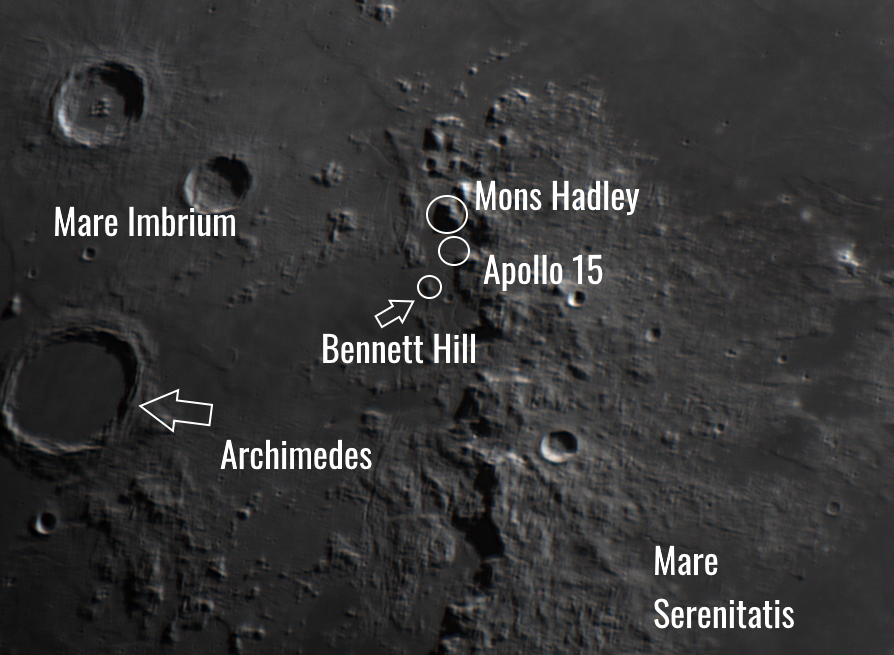
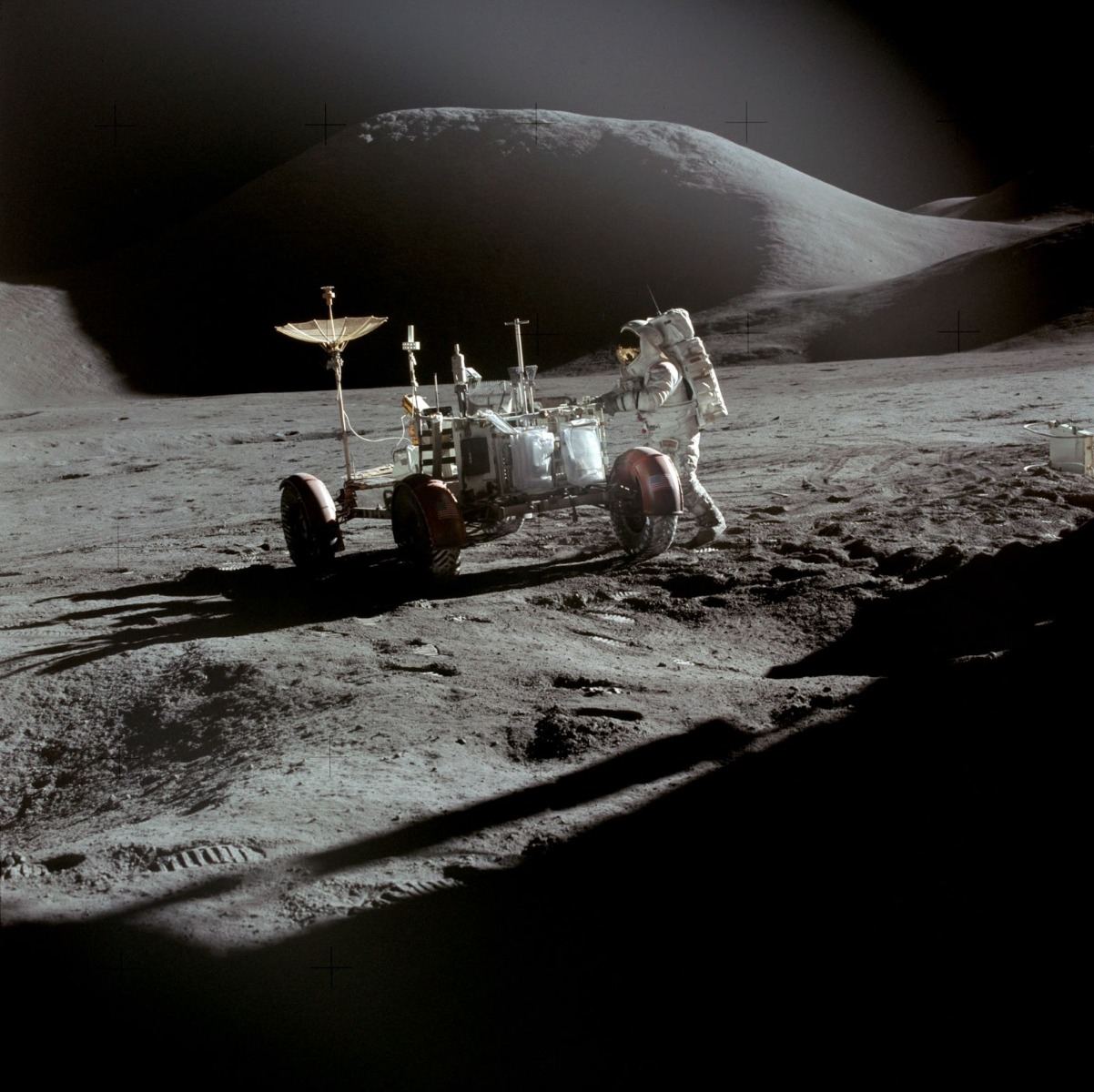
Mons Hadley as seen from the Apollo 15 spacewalk. Image Credit: NASA
How to Find Apollo 17 - Taurus Littrow
The next most recognizable Apollo landing site is Taurus Littrow, the landing site of Apollo 17 - humankind’s last mission to the surface of the Moon in December 1972. This was the final crewed mission to the Moon until the Artemis landings in the next few years. Taurus Littrow might be one of the most obvious landing sites to find. First, find the Sea of Serenity and the Sea of Tranquility. Taurus Littrow is located on the southwestern edge of the Sea of Serenity bordering the Sea of Tranquility. Look for the crater Posidonius along the edge of the Sea of Serenity, then follow that down to Le Monnier crater. Find Dawes and Plinius craters in the Sea of Tranquility. Directly between Olinius and Le Monnier, you should be able to spot the landing site of Apollo 17.



Interested in learning more about what you can see on the surface of the Moon? Check out our Astronomy Hub!
This Article was Last Updated on 07/19/2023





